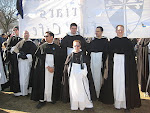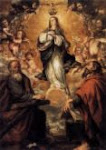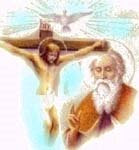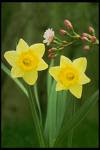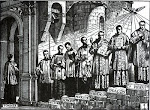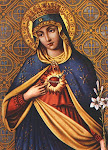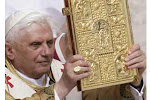 Recently on travelling to a meeting at Holywell, I took a detour to Cwm Pennant, a landscape carved out of the last ice age and one of the truly breathtaking landscapes of North Wales-where there are plenty of them! Pennant means 'the top of the stream' and there is also a Holy well there, but higher up the mountain, where I did not have time to go. It is a remote place and the trees already brushed with autumn colours.In the sixth century this would have been a big and disparate parish, where mmost of the people lived and worked on the land. As we have learned, however, since then, the plague, movement to towns, reformation (which removed the running of the agriculture from monks and to friends of Henry VIII who subsequently turned people off the land and later enclosed it altogether, the people disappeared and the village became much smaller. Around the church are only a couple of houses and there are no inns.A stone preaching cross stood near what is now a car park and unfortunately there also seems to have been a cockpit there at one time. This was called 'Y Rheol' and the locals would gather there on a Sunday afternoon and watch small plays or Eisteddfods in the summer.
Recently on travelling to a meeting at Holywell, I took a detour to Cwm Pennant, a landscape carved out of the last ice age and one of the truly breathtaking landscapes of North Wales-where there are plenty of them! Pennant means 'the top of the stream' and there is also a Holy well there, but higher up the mountain, where I did not have time to go. It is a remote place and the trees already brushed with autumn colours.In the sixth century this would have been a big and disparate parish, where mmost of the people lived and worked on the land. As we have learned, however, since then, the plague, movement to towns, reformation (which removed the running of the agriculture from monks and to friends of Henry VIII who subsequently turned people off the land and later enclosed it altogether, the people disappeared and the village became much smaller. Around the church are only a couple of houses and there are no inns.A stone preaching cross stood near what is now a car park and unfortunately there also seems to have been a cockpit there at one time. This was called 'Y Rheol' and the locals would gather there on a Sunday afternoon and watch small plays or Eisteddfods in the summer.The first thing you notice about the church is the circular churchyard, with its familar form of desert island monastic outlay. Then there are the sacred circle of yews all around the church. If you remember from previous blog posts, the early monastics were in communion with Rome,and followed the lead of the desert fathers. The boundaries marking the delineation of God and Heaven, where people were buried. At the heart of the enclosure was the Church, and at the heart of the Church in the sanctuary, the sanctuary lamp rreminded people of the live throbbing heart of Christ in the Eucharist, which stood at the heart of every church for the first 1,530 years approximately since the earthly death of Our Lord. This was indeed a light brought to the gentiles. The language of the liturgia of the Welsh church was Latin and the monks would chant their offices, often to the sound of the harp. these ecclesiastical enclosures often schooled boys and chieftains of the secular llans often nearby. Yet the village of a religious llan was a small community, where lay people also lived to sserve the monastic community. Some priests were married, and others were not. Bishops could not be.
When Gregory the Great sent his priests on Missions to Britain, he told them not to destroy ancient sites of worship, but to Christianise them and there seems to be some evidence that St Melangell's church(the original mud and wattle church) was built over the site of a Bronze age Barrow, or funeral chamber.The five sacred yew trees around the church are at least 2,000 years old! Around the lych gate (Lych=Saxon-German-Leiche -body or Welsh Llwybr y Corph) are two standing stones brought from early days and fragments of the original shrine of St Melangell are built into the lych gate itself, when the shrine was restored.the preaching cross has been removed from the car park area to the churchyard . Very high status people seem to have been buried here Guto'r Glyn writes of Einion ap Gruffud of Llechwedd Ystrad, a great Welsh poet, who had his Requiem Mass celebrated here and was then buried here, after a life coming to the church on pilgrimage.
A Phennant i gorff Einiawn
Oedd wyddfa Iwys, deddfol iawn
It was Pennant for Einion's body,was a fitting resting place,and very holy.
Saints Festivals and Vigils
Before the Reformation Holy days were celebrated in the church and churchyard. Rustic games prevailed. One such rite was on the vigil (night before the saint's day) young people would do a circular dance around the churchyard and then go into church and confess their sins! But games were also played in celebration of the saints life and witness to the faith. The Communion of Saints, those on earth and those , unknown and known in heaven was a strong part of the faith and the church on earth and in heaven not divided by death.So all rejoiced and celebrated. Masses too on a Sunday began in the Churchyard. It was the day of the Lord's Resurrection and hymns on feast days began outside and there were also prayers prior to going in for the Mass in a joyous procession. Henry VIII ended all this.
Eighteenth Century
By the eighteenth century, the Church was in poor repair and we have to thank Edward Madocks and David Thomas for this restoration. Other people in the parish contributed individual repairs to proches, gates and windows. While much was restored in a more modern style the Romanesque 12 century arches can still be seen inside. It seems the church was similar in shape to the original. The restorers had replaced the small 18th century 'cell y bedd' end of the church, with an apse, in a similar shape to the twelfth century apse.This blends perfectly with the mediaeval building which has kept its original shape and is quite a large church too for this part of Wales. What is beautiful is that the Rood loft has not disappeared. The carvings have lost their colour and their gold and Our Lady and St John have disappeared, along with the painting of the Doom, but the plain oak screen survives with a more modern crucifix above, not displaying the wounds.This seems to be a repair of the original rood screen which will have been torn down by Elizabeths bailiffs, but most old churches are completely lacking it.This screen was dismantled and returned to its original position with a new loft in panelled oak. The figure of Our Lord is in Bronze and sculpted by Kathleen Fuller. The tracery is carved from a solid piece of oak with cusping and foliation features and with panels of the orignal brought back from the back of the church, tracery heads show wgere thhe eleven apostles would have been shown, and there are decorations of oak leaves, acorns, vine leaves, roses, a hand (maybe a symbol from the 5 Wounds devotion) a mythical bird and a 'green man'. The rarest thing is the legend of St Melangell after whome the church was named.
The Vita of St Melangell
It was one of the biggest teaching of the early Catholic church, that women had the right to consecrate themselves to the Lord, and had the right not to be forcibly married. Forced marriages were crimes and some holy women, including St Tekla (st Paul's diciple) were tortured for not capitulating to her fammily's demands. St Winifred too paid the price for her virtue, and St Melangell was no exception in displaying an almost foolhardy courage. In the Vita (Life) of St Melangell (Called Sancta Monacella in Latin) The local bards in Wales took great care to commit such stories to memory and pass them on to their sons. Druidism had gone underground, and yet their ability to remember the ancient accounts meant, that as those powerful Welsh nationalists, the Cistercians arrived and the learned Benedictines, they were able to write them down, where they would be read by posterity. We have a great deal to thank them for. Before being sceptical of their truth, we ought to remember that a Church and llan would not be named after a female saint unless she was very special, and very holy.
Waldo Williams 1904-1971
In complete harmony with the teaching of the Communion of Saints, peace and reconciliation, the great Welsh poet took this as one of his major themes. He was a great ecumanist , brought up as a Baptist, became a Quaker but under the influence of the Russian Orthodox Philosopher Nicolas Berdyaev. One of his finest poems is addressed to the Catholic Martyrs of Wales at the Reformation, whose story had been forgotten , but whom he now celebrates in 'After the Silent Centuries'. He wrote about St Tyssilio of Meifod-a peacemaker, a warrior who renounced violence, like St Derfel. He also writes of Brynach an Irish priest who served at Brychan's court in Talgarth and later at Nevern. Of Brynach we are told, he talked with angels on the hill behind his home.A.M Alchin writes in his excellent account of the pilgrimage site :It is not difficult to think of St melangell talking with angels in this beautiful valley'. In his poem in honour of St Brynach Waldo addresses God as the 'Lord and Shepherd of All ages' who gathers together past and present in one, This is a very beautiful poem, and as we have seen in Llanthony in South Wales, even in Celtic times , where nature all around is living, the veil between heaven and earth is very thin, and was torn down by Christ.
Awakener of the grey mornings in our land
Dawn is not only clear and shining
You have given us on the moorland of time
The light of an unfading hour.
You have reawakened our spirits
The Old Kinship of Earth and Heaven.
In the same poem, Alchin writes,' Waldo sees the saints of Wales standing as guardians around the ;and, by their example giving us new courage, and strengthening us when we feel fearful or sad.He evokes the Holy Wells of Wales as sources of living strength for us now....
Brynach, Irishman, pray for us
May your prayers flow together with ours'.
Waldo wrote of the world in faith and experience, to which the saints belong, the early Celtic experience merging with today's future and even earlier saints where the centuries are distilled into one of the angels and archangels and all the saints company of earth and heaven, known and unknown
St Melangell's Vita
The Historia Diviae Monacellae tells how in the year 604 AD Prince Brochwell Ysgrithog was hunting in Pennant when his dogs chased a hare into a large thicket of brambles. Inside this thicket was a beautiful and holy woman who was at her prayers in her own retreat. The hare went for safety under her robe and cloak. After glaring at her, the dogs fled howling, unable to enter. The Prince discovered she was Melangell, of Moncella, an Irish King's daughter who had come to Wales fifteen years before to escape a forced marriage. She was leading a hermit's life of rest and contemplation. Brochwel was so moved by her quiet courage, reverence and piety, he gave her the valley as her place of sanctuary. Acclaimed a saint by local people after her death, St Melangell had founded a female monastic house here and she lived here for many years in friendship with the animals.Another detail was added from local sources as late as the eighteenth century, that Thomas Pennant , a visitor was told that the prince's huntsman had tried to sound the horn to make his hounds go into the thicket, but the horn stuck to his lips! Whether this was a case of later embroideryh we will never know.The figures of the foliage in the frieze on the rood screen tall the same story.
The Shrine of St Melangell
 Unusually, the shrine in the chancel dominates the church. It was constructed ca 1160-70 AD to hold the relics (bones and possessions) of the saint. The saint was revered and honoured here for centuries and when Henry VIII robbed such shrines, £2.14.6d were taken by his men in 1535, being the offerings of pilgrims for the upkeep of the shrine.In John Hainsworth's excellent guide to the church, he recalls in recent memory a building called 'The Herberage' where people rested on their pilgrimage.1561 Elkizabeth I gave the order to destroy it, and pieces of it were built into various bits of the wall and buildings, but were identified in 1894 and put together again and brought back into the church. They were rescued in 1958 and pieced together and reerected in the building which had replaced the apse, During 1989, the shrine was rebuilt in the chancel .Traces of colour have been found and the restorer Robert Heaton , used concrete to show the new work,It is made of yellow sandstone and has Celtic and Romanesque elements. There is a votive stand-.The effect must have been rich and emotional. This reconsituted shrine is unique in Britain. It is thought that originally there was a lower level into which the shrine was built.
Unusually, the shrine in the chancel dominates the church. It was constructed ca 1160-70 AD to hold the relics (bones and possessions) of the saint. The saint was revered and honoured here for centuries and when Henry VIII robbed such shrines, £2.14.6d were taken by his men in 1535, being the offerings of pilgrims for the upkeep of the shrine.In John Hainsworth's excellent guide to the church, he recalls in recent memory a building called 'The Herberage' where people rested on their pilgrimage.1561 Elkizabeth I gave the order to destroy it, and pieces of it were built into various bits of the wall and buildings, but were identified in 1894 and put together again and brought back into the church. They were rescued in 1958 and pieced together and reerected in the building which had replaced the apse, During 1989, the shrine was rebuilt in the chancel .Traces of colour have been found and the restorer Robert Heaton , used concrete to show the new work,It is made of yellow sandstone and has Celtic and Romanesque elements. There is a votive stand-.The effect must have been rich and emotional. This reconsituted shrine is unique in Britain. It is thought that originally there was a lower level into which the shrine was built.One more unique element-Survival of Relics?
During the excavarions of 1958, the skeletal remains of a 5 feet woman and these bones were kept in the Anglican Rectory for some years. It is likely the Elizabethans would have though it sacrilege to destroy her remains and may have secretly and reverently buried her. Further fragments were found in 1989. There is always going to be an element of risk as to whether thesse were the bones of St Melangell, however, had they identified such remains, they would have almost certainly been destroyed in the hateful time of iconoclasm, both then and under Cromwell.
The Powis Family
Were a local and loyal Catholic family of means, who are said to have taken some of the bones for safety to St Omer in Northern France, where many of the priests of the 'English' mission were trained. The bones of a great saint are considered a powerful prayer aid, linking the saint's intercession with your own. These priests returned as single men to minister the original Christian faith to their flock and were often killed if found and sometimes hung drawn and quartered. There is interestingly a cult of St Melangell at St Omer .It seems the Powis Family may have brought it, to focus the minds of the priests returning to Wales to venerate and ask St
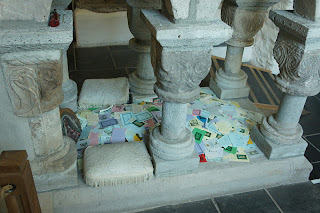 |
| Requests for the saint's intercession |
St Melangell's is now part of the Anglican Church in Wales structure and it appoints a Guardian of the Shrine and a Vicar in Charge of the shrine. Pilgrimages are held here and many people come to visit.
‘The Book of Saints’ Compiled by the Benedictine Monks of St. Augustine’s Abbey, Ramsgate (sixth edition 1989/94) ISBN 0304343579 notes that her feast is May 27th and that she died c590. Others date her death to c607, c641 or even early 8th Century. Directions: Satnav:SY10 OHQ near OSWESTRY in Shropshire. Get off the M5/6 at Birmingham on M54 to Shrewsbury and then follow signs to Oswestry.




